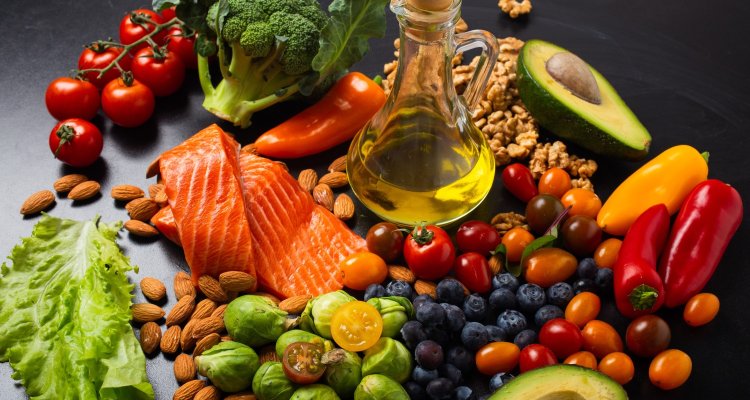
Project
SHARP Diet Modelling for Achieving Healthy and Sustainable Diets
Current dietary practices are far from meeting health standards and, in developed countries, impose large impacts on the environment. The SHARP model can be used to find acceptable and realistic changes towards more healthy and sustainable diets.
Our food system is failing us
The fast-growing world population and its increasing demand for nutritious, more sustainable, affordable, and tasty foods is one of the most important problems of our times. Food is essential for our survival, yet its current production and consumption practices are causing a high burden on our planet and health. The global food system is responsible for about one-third of all greenhouse gas emissions, and is a major driver of biodiversity loss, deforestation, and water extraction and pollution.
At the same time, we are faced with increasing food insecurity and adverse diet-related health impacts. The unequal distribution of food has led to various forms of malnutrition and its subsequent diseases, ranging from undernutrition and micronutrient deficiencies to obesity-related and non-communicable diseases. Food system transformations that support and enable consumption of healthy and sustainable diets for all are highly needed. Diet modelling can be applied as a useful tool to guide towards such future proof diets.
What is SHARP?
SHARP (Sustainable, Healthy, Acceptable, Reliable, and Preferable diets) is a diet optimization model that suggests small dietary changes for achieving more healthy and sustainable diets, by using better dietary practices of peers.
What makes SHARP unique?
Traditionally, diet models have optimized diets by making combinations of individual foods or food groups, so that the optimal diet, for example, meets nutrient requirements and/or stays within planetary boundaries. SHARP is not based on individual foods or food items, but rather makes combinations of whole diets of peers that have healthier and/or more sustainable dietary practices. Unique about this method is that basic interrelationships between food items and meals are implicitly maintained in the optimized diets.
For example, combinations such as bread with a topping, yogurt with cornflakes, or pasta with tomato sauce are preserved. This is essential for finding realistic changes towards more sustainable diets, as these combinations are largely determined by the food culture and current eating habits of a population. The model uses the best practices within current consumption boundaries to calculate realistic and acceptable diets that are healthier and more sustainable than the current ones.
SHARP is developed in collaboration between the Operations Research and Logistics and Human Nutrition and Health departments within Wageningen University and Research. This strong interdisciplinary collaboration guarantees the quality of the model from different perspectives.
Applications of SHARP
Scientific purposes
SHARP has been applied in a European setting, including Czech Republic, Denmark, France, Italy, and the Netherlands, and an East Asia setting, including China and Japan. In these settings, various aspects of sustainable diets have been evaluated such as nutritional health, protein quality, environmental sustainability, affordability, and cultural acceptability. This allowed us to identify synergies and trade-offs in the food system that are context-specific. For example, healthier diets in the Netherlands are associated with lower greenhouse gas emissions compared to current diets, whereas healthier diets in China actually emit more greenhouse gasses.
Support for governmental advice
The Dutch Health Council provided an advise on a ‘Healthy Protein Transition’ to the Dutch Ministries of Agriculture, Nature and Food Quality and Health, Welfare and Sport. To support this advice, we explored the effects of an intake of 40% animal protein and 60% plant protein on the nutritional health of the diet commissioned by the Dutch Health Council. WUR researchers applied the SHARP model for this purpose. The report can be accessed here (in Dutch).
Ongoing research and future directions
WUR researchers are extending the use of SHARP by exploring the role of alternative protein sources, including plants, algae, insects, and lab-grown meat, in the optimized diets. In the future, we wish to add food safety aspects to the model as these are of high importance when evaluating the health impacts of novel foods. Upcoming developments to the model will take into account the bioavailability of nutrients, such as protein and iron, based on the food matrix (e.g. anti-nutritional factors) and combinations of foods within a meal. Further work includes adding uncertainty ranges to the model and predicting changes of environmental impact indicators due to food system transformations.
Academic staff members
-
S (Sander) Biesbroek PhD
Assistant Professor -
prof.dr.ir. P (Pieter) van 't Veer
Professor in Nutrition, Public Health and Sustainability -
dr. A (Argyris) Kanellopoulos
Associate Professor -
prof.dr. JM (Marianne) Geleijnse
Professor in Nutrition and Cardiovascular Disease -
dr.ir. JC (Joke) van Lemmen-Gerdessen
Universitair docent -
dr.ir. A (Anneleen) Kuijsten
Academic Teacher/ Researcher -
dr.ir. EHM (Liesbeth) Temme
Externe medewerker